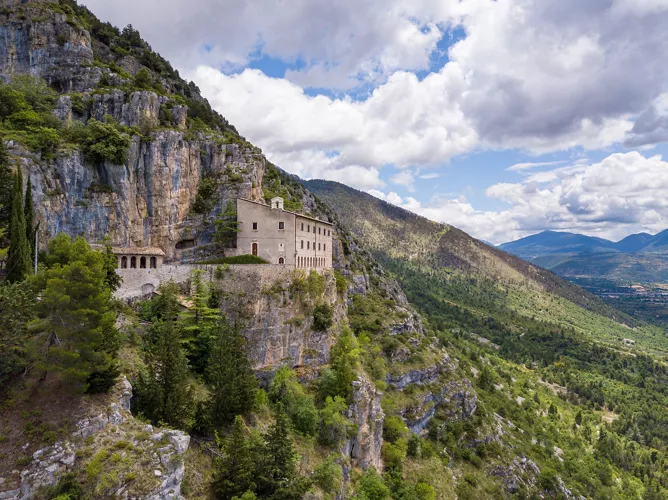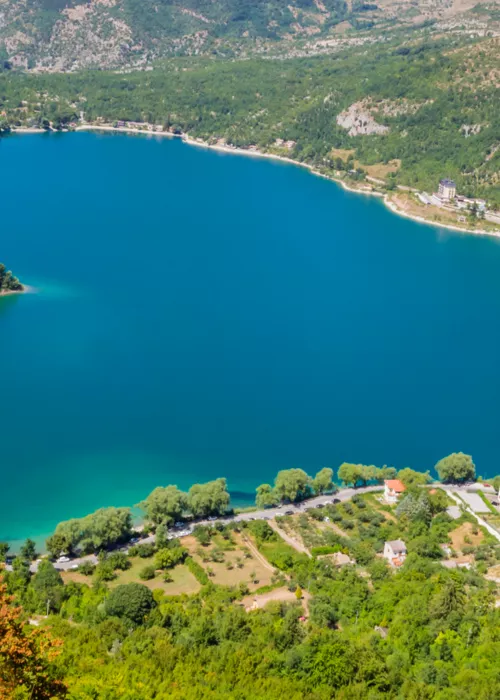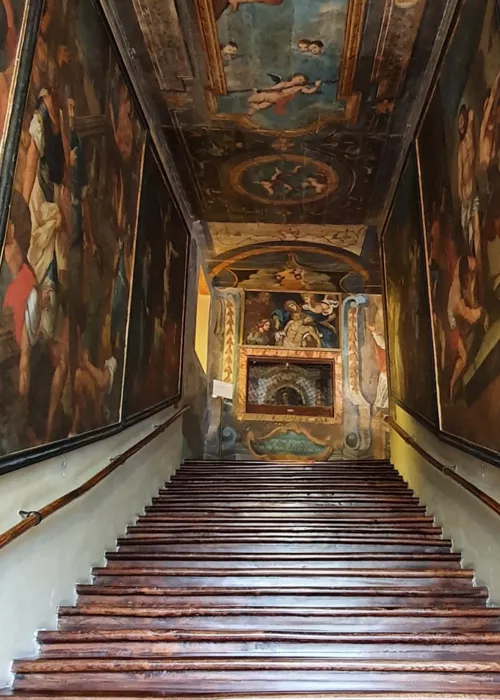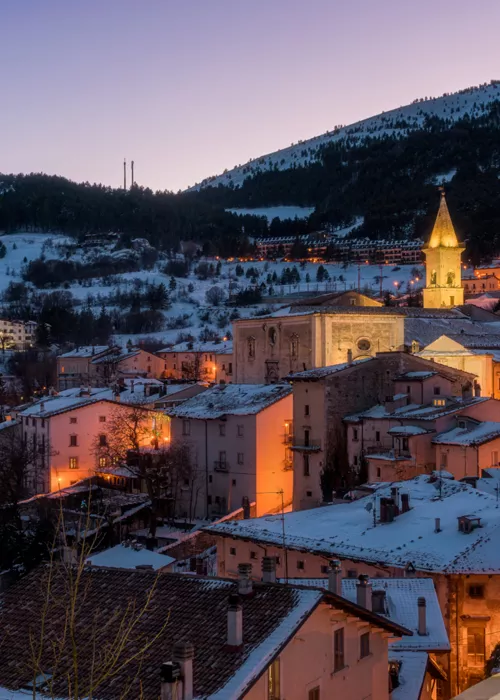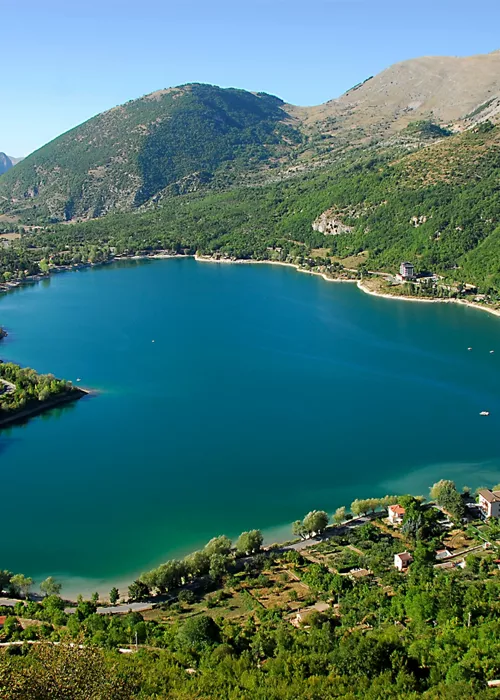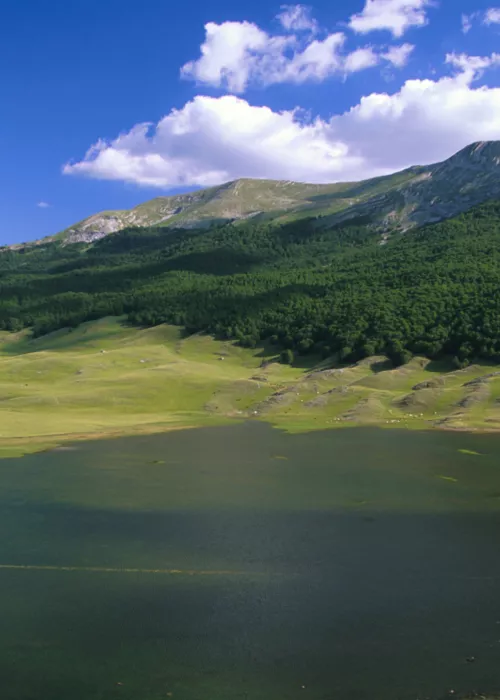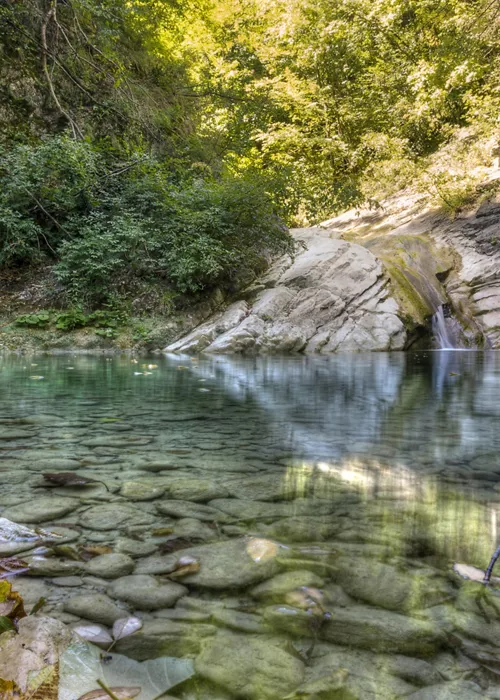Discovering the Hermitage of Sant'Onofrio al Morrone
Mountain scenery with a strong scenic impact, watercourses bordering scenic roads, the green of the woods alternating with imposing rocky scenery: climbing up the Gran Sasso d'Italia and arriving in Sulmona, we can explore the timeless beauty of the Hermitage of Sant'Onofrio al Morrone, a small Abruzzo jewel.
Sant'Onofrio al Morrone Hermitage: history of a pearl set in the mountain
Perched on one side of the mountain, with a vantage point overlooking the Peligna Valley and the Gran Sasso and Sirente-Velino mountain ranges, the Hermitage of Sant'Onofrio al Morrone was built by Pietro Angelerio, the future Pope Celestine V, who lived part of his life there while fleeing from Boniface VIII. It was the last of the hermitages built after 1290 by the then Fra Pietro. Abandoned in 1807 as a result of the suppression of several religious orders, it came back into use when a number of hermits, both lay and religious, moved there.
Tradition has it that Fra Pietro received the news of his election to the papacy while observing a penitential fast in honour of Our Lady of the Assumption and St Peter. The Crucifix in front of which the saint was praying allegedly nodded his head and Peter reacted with these words: “I assent to the vows of the Sacred College and accept the Supreme Pontificate. May the Lord help me to bear its very heavy yoke”. After his abdication, Peter returned to Sant'Onofrio and remained there in hiding until February 1295, when he left for Apulia and then sailed to Greece.
Declared a national monument in 1902, the Hermitage was partially destroyed during the Second World War before being carefully reconstructed. Today it is considered to be at the heart of one of the most important religious journeys in Abruzzo.
Among works of art and mystical atmospheres
It only takes a day to appreciate the marvels of the Hermitage of Sant'Onofrio al Morrone, beginning with the oratory, skilfully frescoed by Maestro Gentile da Sulmona in 1200. In the background we can admire a crucifixion scene depicting Mary and St. John at the foot of the Cross, while at the entrance St. Benedict is portrayed between the hermit Fathers Mauro and Antonio.
The precious 15th-century wooden ceiling and the ancient white stone altar are noteworthy: in the middle is the stone crucifix that, according to tradition, Celestine V blessed during the mass celebrated in pontifical clothes before travelling to Naples. Also of great historical interest are the recently restored cells and rooms that have accommodated religious and secular hermits over time.
Hiking enthusiasts can reach the panoramic viewpoint overlooking the Peligna Valley: there is a refreshment point and picnic area where they can rest and enjoy the view.
A place of worship and propitiatory rites
It is not only an evocative destination in which to find calm and introspection, but also a place of worship and a destination for pilgrimages and propitiatory rites. At the Hermitage of Sant'Onofrio di Morrone, the rubbing (lithotherapy) of sore body parts on the rock walls is a tradition.
The grotto beneath the hermitage is rich in the waters to which the faithful attribute thaumaturgical powers. The collection of rubble, dust and plant twigs gathered around the sanctuary is also popular. It is possible to watch stone throwing on the terrace, symbolising the negative influences, sorrows, temptations and sins from which people want to separate themselves forever.
For more information
Pacentro Information Centre - Tel. +39.0864.41304 - +39.349.8474470



